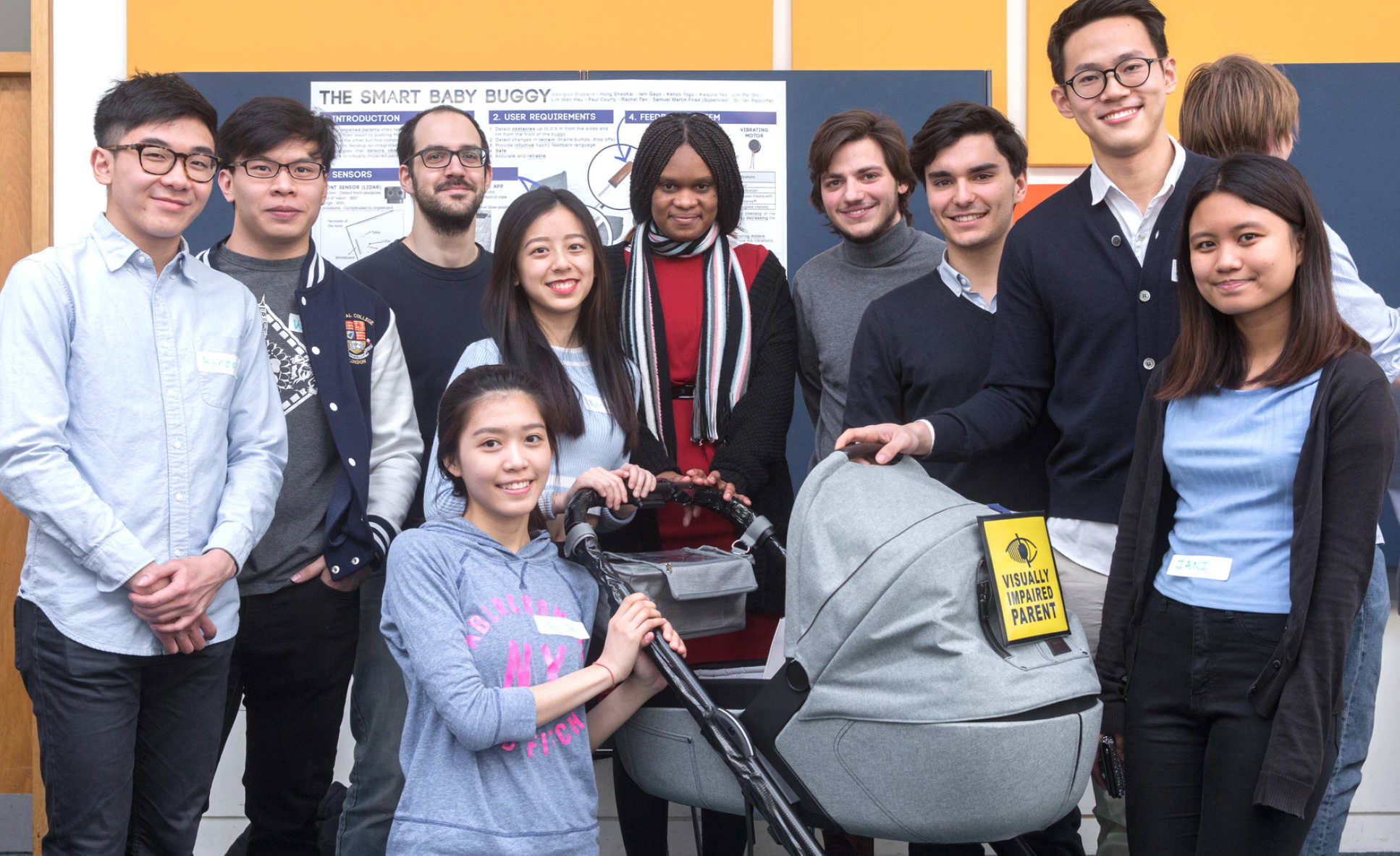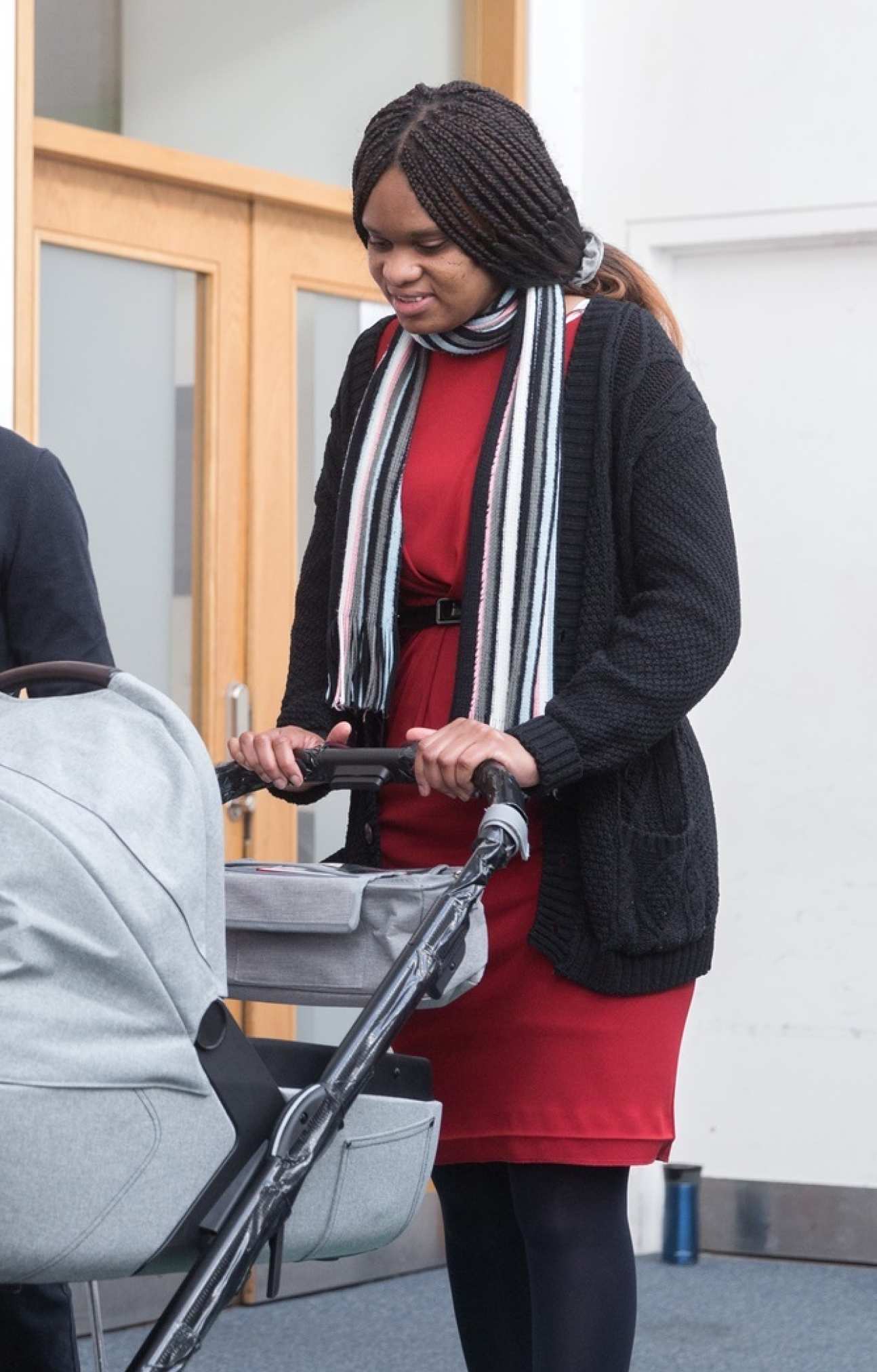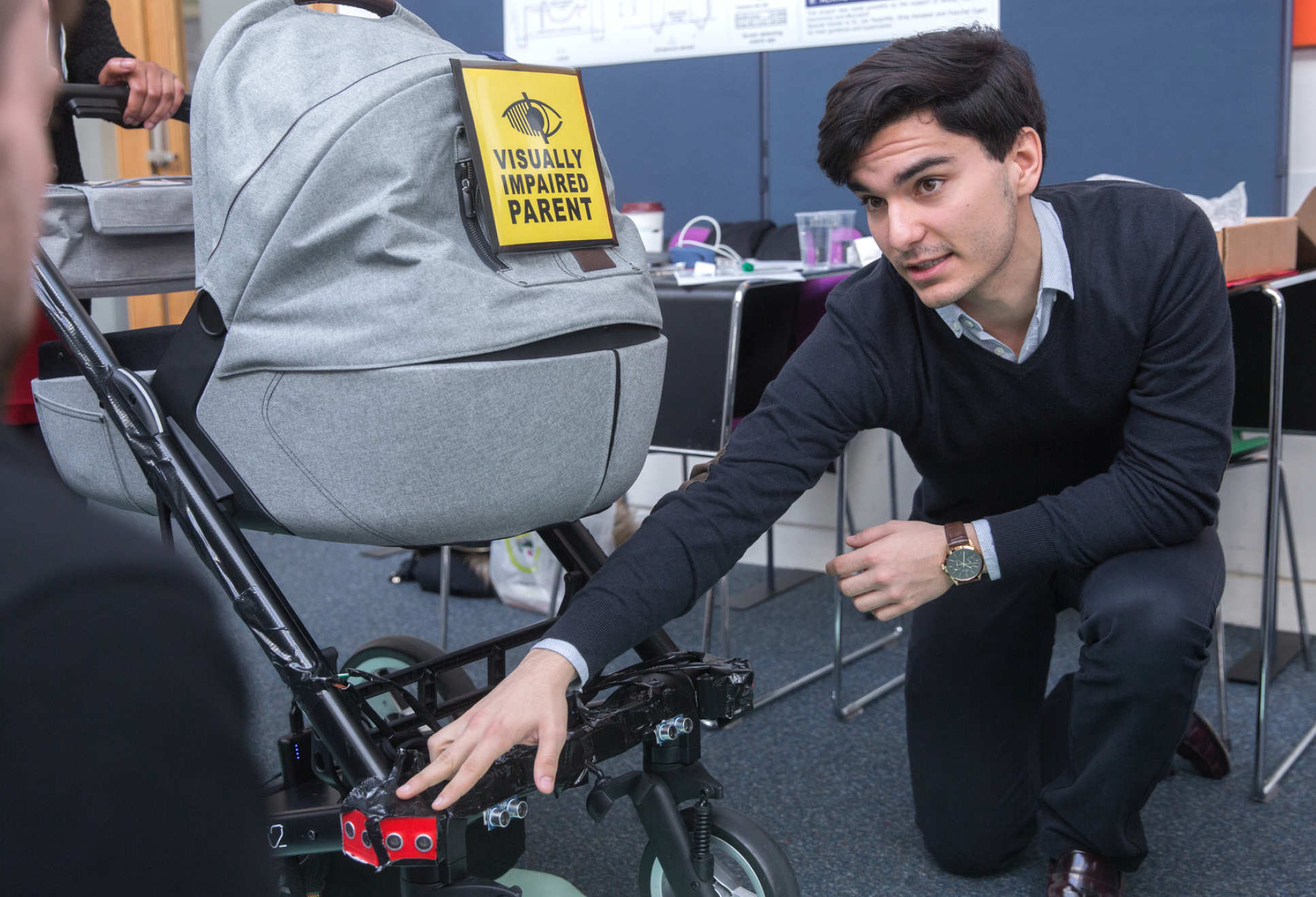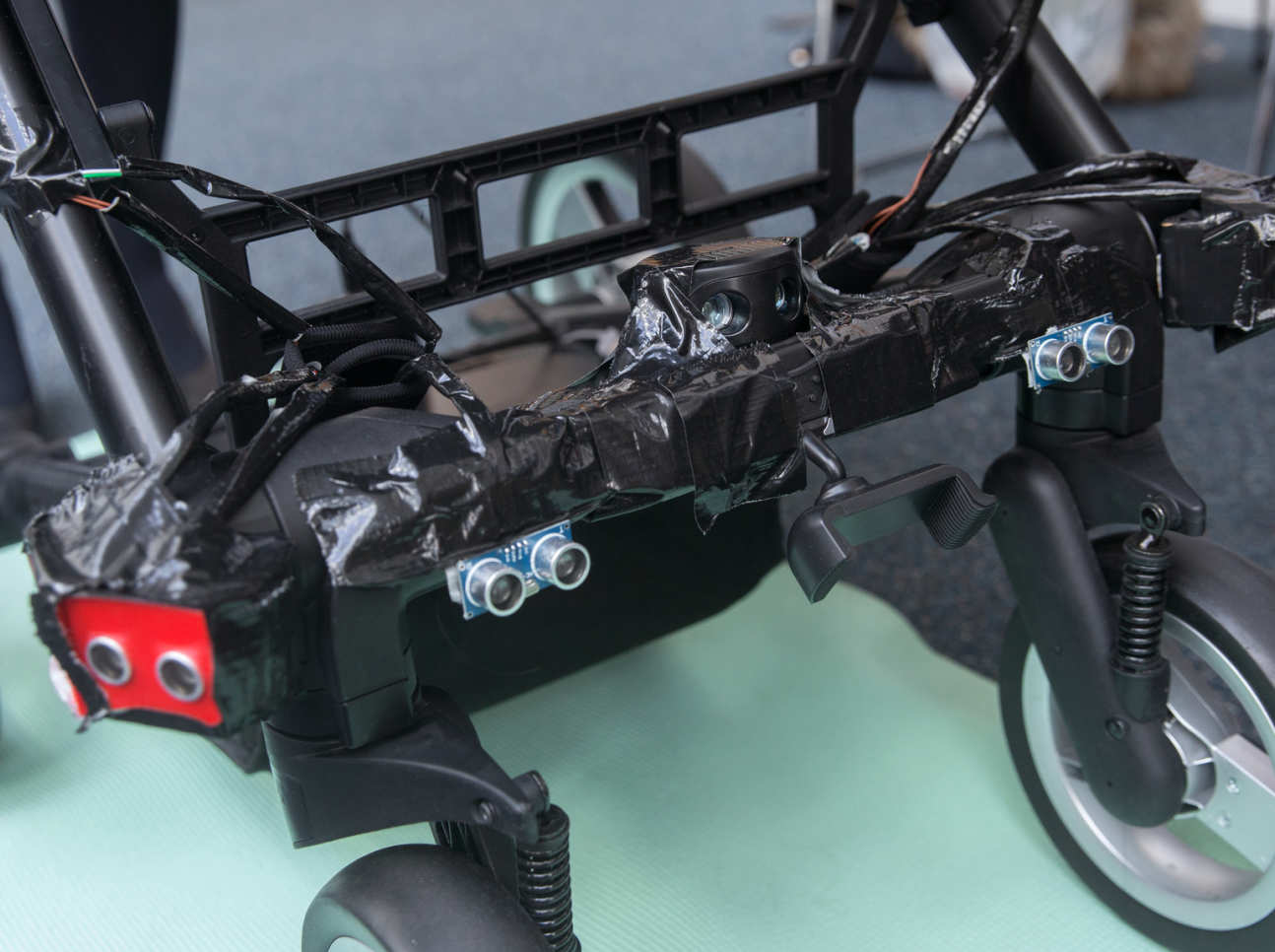A baby buggy which senses its environment through technology normally used in self-driving cars has been created by a team of student engineers.
It is the brainchild of a sight-impaired west London resident who brought her idea to the attention of Imperial makers at a community event.
The Smart Baby Buggy uses a combination of LIDAR – laser technology used in self-driving cars – and ultrasound sensors to warn users of oncoming hazards such as vehicles, pedestrians, curbs and drop-offs through vibrations in the handlebar.
The innovative pushchair is set to be showcased to the public at Imperial Festival’s ‘Engineering to Enable’ exhibit on Saturday 28 and Sunday 29 April.

Keeping parent and baby safe: Meet the inventor
I didn’t expect anyone would be keen to take on my idea as a design project but then I got a call called saying 10 students were interested Ramona Williams
The Smart Buggy was originally dreamed up by Fulham resident Ramona Williams, who noticed a lack of solutions to help sight-impaired people safely take their children out and about.
Ramona, 34, has a series of eye conditions including congenital toxoplasmosis which has significantly impaired her vision since she was born. She explained she did not feel comfortable using a pushchair with her cane folded up under her hands on top of the handle bar, as she was having to prevent the cane from falling and navigating the pushchair. The cane was also important is it is a clear signal to oncomers that she has a visual impairment.
“I know a few visually impaired people who have children and either carry the children or have they cane in one hand, while pulling the pushchair with the other hand from behind,” Ramona said.
“This made me realise that something is really needed to enable people with sight loss who have babies to move about safely with the kids when out and about. This also made me start to think about when I settle down and have children of my own.”
 This inspired her to dream up a buggy that solved the problem:
This inspired her to dream up a buggy that solved the problem:
“My idea was to have a pushchair with vibrations on it to warn of hazards; something on the buggy to attach a cane to; and a sign that signifies that the person pushing the buggy is visually impaired.”
Ramona shared her idea with Imperial community officers last summer at a launch event for the College’s partnership with the London Borough of Hammersmith and Fulham to support economic growth, enterprise and innovation in the area.
She had heard of the event through work she does at nearby Westfield London shopping centre. As director of her own business, Eyes for Success, Ramona trains organisations how to better understand the needs of sight-impaired people.
Following the event, the College’s community engagement team pitched Ramona’s idea to the Imperial’s Department of Bioengineering as a potential student project for their second year Engineering Design project.
“I didn’t expect anyone would be keen to take on my idea as a design project but then I got a call called saying 10 students were interested,” Ramona said.
Bringing the buggy to life
Since October, the team of second year biomedical engineering students has worked with Ramona to bring her idea to reality.
“In many ways we took inspiration from the cane itself,” explained the team’s leader, Samuel Martin Frias.
“We wanted using the buggy to be like an extended version of using a cane to sense the environment around you. We wanted to make using this new technology as familiar an experience as possible.”

The modified buggy uses a combination of ultrasound and LIDAR sensors to get a 180-degree wide field of hazard perception.
These signals are gathered by a processor in the base of the buggy, and then out to vibration motors in the handlebar. Through different types of vibrations, the designers have created a touch-based – or haptic – language for communicating to the user when they are approaching hazards.
The buggy also has a cradle in its base for holding the user’s smartphone to gain information about the ground ahead of the buggy. By installing an app designed by the team, the smartphone can recognise various landmarks such as braille bumps, corners, and drop-offs, and inform the user via headphones.
The buggy also has a bracket for holding the user’s cane, and a bright yellow ‘Visually impaired parent’ sign on its front to inform oncoming traffic and people.
Design solutions for real life problems
In the early stages of the collaborative project, Ramona ran a workshop with the students to help them get into the mindset of the people the buggy is designed to help.
We would really like to take it further as a startup company Samuel Martin Frias Smart Baby Buggy team leader
“She really did give us a sense of what it is to be sight impaired,” Samuel said.
“By using special glasses which simulate sight loss and demonstrations on how to use a cane, Ramona helped us understand what it’s like for her.”
Ramona added: “I loved working with the students. It feels good to know that as they grow up to become designers and engineers, they will remember this project. It will inspire them to design products that help people.”
 Once complete, the prototype buggy will be given to Ramona to use. However, both she and the student team are keen to take the innovation further.
Once complete, the prototype buggy will be given to Ramona to use. However, both she and the student team are keen to take the innovation further.
Samuel said: “We’re still discussing it, but we would really like to take it further as a startup company. And not just with the buggy. It could be used on wheelchairs, or shopping trolleys. It’s very exportable.”
Engineering to enable: Showcase at the Imperial Festival
At the end of April, the Smart Baby Buggy will be presented to the public at Imperial Festival – the College’s free annual public event celebrating the best science, engineering and creativity from the Imperial’s community.
It will be showcased in the ‘Engineering to Enable’ exhibit in the Festival’s new Enginuity Zone alongside other student innovations such as a board game that you control without the need to use your hands, and a seat sensor designed for wheelchair fencing competitions.
Ramona and the students are excited to be presenting their project.
“I’m really looking forward to being at the Festival,” said Ramona.
“When I’m there I’ll be able to share with visitors how my idea for the pushchair came about, and how I worked with Imperial to make it a reality. I really enjoy those kinds of opportunities to speak to the public.”
Samuel said: “It makes me proud to have a chance to not only explain the technology and design, but to highlight the main purpose of the project – to help someone who came to use with a problem. And that it was students who were able to come up with the answer.”
Imperial Festival will be held on the South Kensington Campus from Saturday 28 - Sunday 29 April. It is free and open to the public. To attend please register in advance.
–
The Smart Baby Buggy is supported by Mutzy, Sparkfun Electronics, and Microsoft Azure.
The student team members behind the innovation are: Samuel Martin Frias, Georgios Gryparis, Iani Gayo, Pei Lim, Shaokai Hong, Kenzo Togo, Kwayne Teo, Wen Lim, Paul Courty and Rachel Tan.
Article text (excluding photos or graphics) © Imperial College London.
Photos and graphics subject to third party copyright used with permission or © Imperial College London.
Reporters
Andrew Youngson
Communications Division
Martin Sayers
Communications Division

Contact details
Tel: +44 (0)20 7594 8140
Email: m.sayers@imperial.ac.uk
Show all stories by this author
Thomas Angus [Photographer]
Communications Division

Contact details
Tel: +44 (0)20 7594 2858
Email: t.angus@imperial.ac.uk
Show all stories by this author




Leave a comment
Your comment may be published, displaying your name as you provide it, unless you request otherwise. Your contact details will never be published.